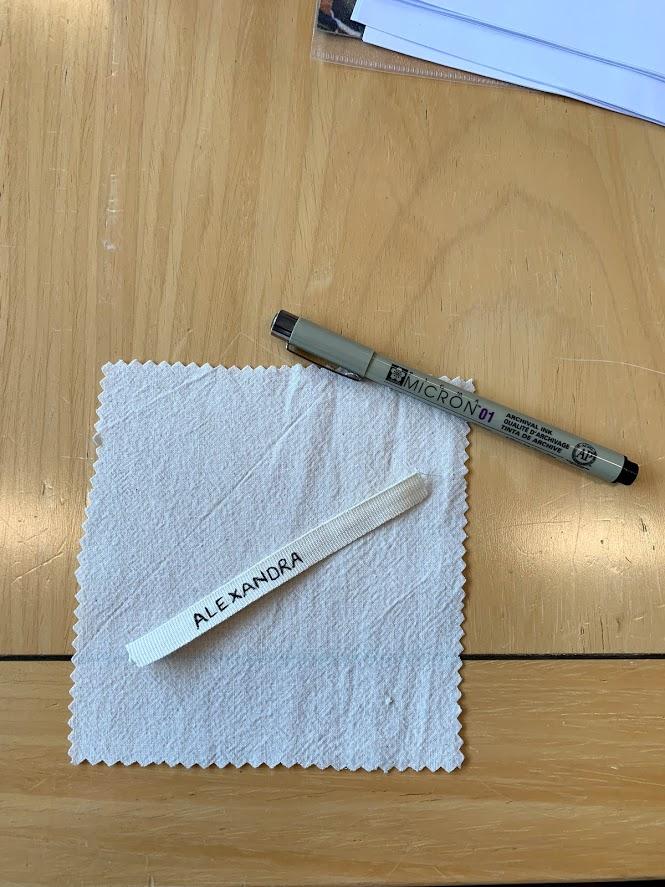Alexandra Foulds: Textile Conservation with National Museums Scotland
About the author
Alexandra Foulds started volunteering in the archive at David Livingstone Birthplace museum in July 2019. She is currently doing an archives masters at the University of Glasgow, after completing a PhD there in nineteenth-century literature and culture.
It was a (surprisingly) sunny morning when I got off the bus outside the National Museums Collection Centre in Granton, Edinburgh, at the beginning of September 2019. At the time I had been volunteering with the David Livingstone Trust for three months helping to catalogue the collection, and had been asked if I would like to attend a workshop on textile conservation organised by National Museums Scotland as part of their national training programme. I had spent the last couple of weeks helping the Trust’s Collections Manager, Kate Smith, and Conservator, Lesley Scott, to unpack, catalogue, condition check, label and repack a beautiful collection of clothing and fabrics belonging to David Livingstone and to Selim Hishmeh (Henry Morton Stanley’s translator). As I had never worked with textiles before, the workshop was taking place at the perfect time to supplement the object handling training I had been receiving from Kate and Lesley, and it was suggested that I sign up and report back on whether we were following the most current recommended practices.
The workshop was led by Lynn McClean, the Principal Conservator for National Museums Scotland, Lisa Mason, Assistant Curator of Modern and Contemporary Fashion and Textiles, and Emily Taylor, Assistant Curator of European Decorative Arts, and was attended by other museum volunteers like myself as well as curators and assistant curators from museums across southern Scotland.
To start off Lynn McClean taught us about the principle factors that can affect the condition of textiles: light, temperature, humidity, pests, dust, creasing, inappropriate storage or mounting, and foreign bodies, such as cellotape or other materials used in past repairs. We learned not only what conditions prevent damage occurring, but what best practice measures can be taken for prevention and when a textile conservator may be necessary.
After a short break, Lisa Mason and Emily Taylor talked to us about proper object handling, recognising items that can be hung and items that need to be laid flat or rolled and the methods and materials they would use to do each of these things, as well as how and when to do a condition check. We also learned about some of the health and safety risks of dealing with historical clothing, such as the presence of early, combustible plastics, dyes made of arsenic, and felt treated with mercury in nineteenth-century clothing.
The afternoon then took a more practical turn as we put into practice some of the techniques we had been told about. We were given unbleached cotton tape, archival ink pens, and acid-free thread and given the chance to practice sewing an object label onto a piece of fabric using a back stitch and running stitches. We were shown how to use acid-free tissue to make packing sausages and doughnuts. Then we were taken into the store and split into two teams, each given a storage box, tissue paper and some items of clothing that we had to pack properly into the box using the skills we had learned. It was great fun to be able to get hands-on with objects in the National Museums Scotland collection, and by this point I felt confident that I knew what I was doing. Everything we had been taught had shown me that the training I had received from the David Livingstone Trust had all followed best practice and so I simply had to implement the techniques I had already been using.
The day ended with a tour of the store so that we could see how National Museums Scotland implements the techniques we had been told about and some of the innovative storage solutions they have come up with to use their space most efficiently. We were sent away to put the skills and techniques we had learned into practice with our own collections, and I hopped on the train back to Glasgow to report that we were doing everything we should be to conserve our fantastic textile collection for future generations.






